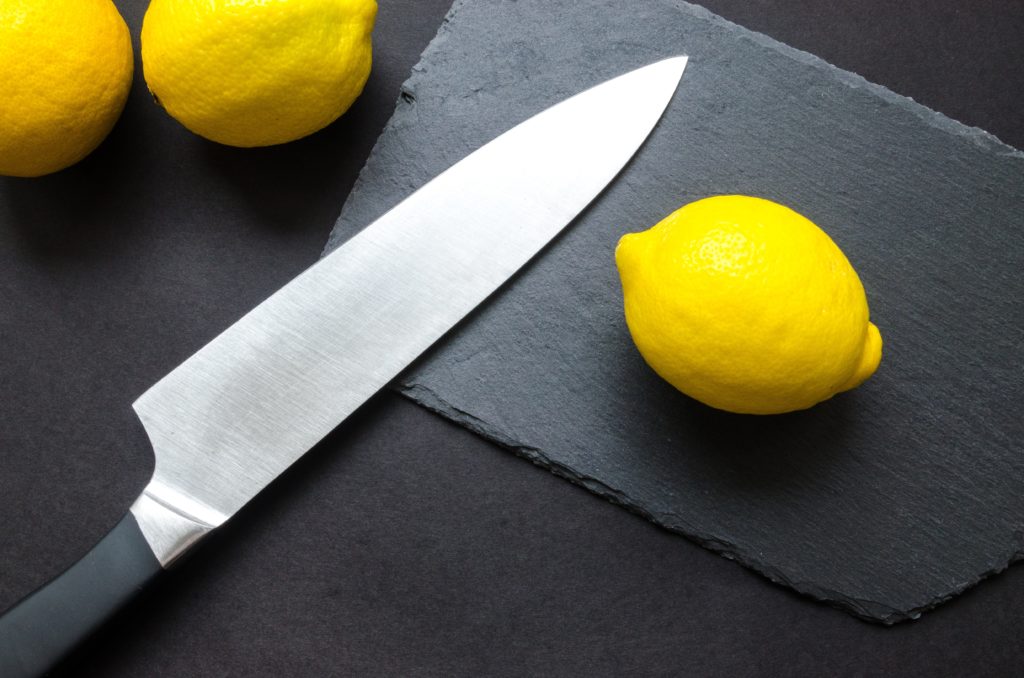Let me tell you a story. There I was, on a bus near a middle-of-no-where Vegas casino, when we came to a stop for some gas. I got off to use the restroom when I noticed that my pants were hanging lower than usual (thankfully, no one else noticed).

I discovered that the problem was that the head of my belt had torn off from the belt itself (it was a type of ratchet belt, without notches). Attaching it back on wouldn’t have been a problem, but the end of the belt was frayed and torn.
I needed to cut off the excess belt in order to reattach the head.
And guess what?
My knife was stuck in my luggage, underneath the bus.
When the bus started moving again, I had to sit there with a small metal ruler I found in my bag, and slowly saw my way through the excess belt. Do you know how hard it is to cut through leather-like-substances with a flimsy little ruler?
This little anecdote is just one example of how being prepared at all times can save you so much time and hassle, but if you’re going to be carrying around knives everywhere you go, you gotta know your basic knife safety. Here are some rules of thumb to keep in mind if you like knives and being prepared to use them.
Keep your knife Sharp
Keeping your knife sharp may sound counter-intuitive in terms of safety, but trust me, a dull knife is absolutely more dangerous than a sharp one! There are two reasons for this.
One, as the knife gets duller and duller you start pressing harder and harder, so if that knife should slip, god forbid, you could seriously end up hurting yourself.
Two, a dull knife will catch and get stuck easier, and there’s the same danger again to apply a force to get it unstuck, slipping, and hurting yourself. Or someone else, even. Keep your knife sharp, either by getting yourself a whetstone or going to a professional.
The Right Knife for the Job
Knives are a tool, just like hammers, screwdrivers, and wrenches. Using the right tool for the job will not only make the job easier but is also better for the tools. You don’t hang a painting with a tire-iron.
Knowing what kind of knife you have and when you should be using it is important for both the care of the knife and your own safety. A chef’s knife is a good type of knife; it cuts well and has a good strong handle. But it won’t cut through bread.
A serrated knife, such as your typical bread knife, is what you need. I have a Swiss-army-knife that has about four different types of knives on it, and each of them are for different situations. Know what tool you are holding, because knowing is half the battle.
Safe Knife Usage
Using a knife properly mostly comes down to common sense. What are you trying to avoid when using a knife? Chopping fingers, gutting yourself, nicking fingernails – these are accidents that happen all the time, every day.
Not because the knives are dangerous (and, obviously, they are), but because of “user error”, to put it nicely.
If your cutting, say, a sheet of cardboard, always cut away from your own body, even if it’s inconvenient. If your chopping a tomato, DON’T hold the tomato and cut at your own palm. Before even using a knife, if you can wash and dry your hands so that you can retain a firm grip. Remember, slippage is dangerous. Don’t be “that” guy because you were lazy.
Bottom Line
Knives are awesome. They look cool, they’re wicked sharp, and they’re dangerous. They’re a tool, designed to be used, and it’s up to YOU to use them right.
You can sharpen ‘em properly, wear gloves and safety gear, and buy the highest quality you can get a hold of, but at the end of the day, the only way to feel safe is to be safe.
Know what you’re doing, what you’re using, and be prepared. Always.
To read more on topics like this, check out the life tips category.


